《COASTAL STATE JURISDICTION OVER VESSEL-SOURCE POLLUTION》
| 作者 | ERIK JAAP MOLENAAR 编者 |
|---|---|
| 出版 | KLUWER LAW INTERNATIONAL |
| 参考页数 | 632 |
| 出版时间 | 1998(求助前请核对) 目录预览 |
| ISBN号 | 9041111271 — 求助条款 |
| PDF编号 | 813681238(仅供预览,未存储实际文件) |
| 求助格式 | 扫描PDF(若分多册发行,每次仅能受理1册) |

INTRODUCTION1
CHAPTER Ⅰ. Introduction1
1. Objective1
2. Scope and approach2
2.1. General2
2.2. State practice4
2.3. Customary law7
3. Outline10
PART 1VESSEL-SOURCE POLLUTION IN INTERNATIONAL LAW15
CHAPTER Ⅱ. Nature and Politics of Vessel-Source Pollution15
1. Introduction15
2. Nature of marine pollution16
2.1. Definition of marine pollution16
2.2. Sources of marine pollution18
2.3. Vessel-source pollution19
2.3.1. Causes19
2.3.2. Responses21
2.3.2.1. Standard-setting21
2.3.2.2. Implementation, compliance and enforcement25
3. Actors involved in the regulation of vessel-source pollution27
3.1. States27
3.1.1. General27
3.1.2. Developed States versus developing States28
3.1.3. Coastal States versus maritime States30
3.2. Companies and shipowners32
3.3. The environmental movement34
3.4. The insurance indust35
3.5. Classification societies36
3.6. International organizations36
CHAPTER Ⅲ. The International Legal Framework of Vessel-Source Pollution41
1. Introduction41
2. Customary rules and general principles41
3. International instruments46
3.1. General multilateral instruments46
3.1.1. Geneva Conventions46
3.1.2. Intervention Convention47
3.1.3. Stockholm Declaration and Action Plan47
3.1.4. LOSC49
3.1.4.1. General49
3.1.4.2. General obligations in PartⅩⅡ52
3.1.4.3. Relation to other treaties54
3.1.5. Rio Declaration and Agenda 2155
3.2. Regional, bilateral and miscellaneous global instruments57
3.3. Global regulatory instruments60
3.3.1. General60
3.3.2. MARPOL 73/7863
3.3.3. SOLAS 7470
3.3.4. Other conventions73
CHAPTER Ⅳ. Jurisdiction75
1. Introduction75
2. The concept of jurisdiction in international law78
2.1. Territorial jurisdiction78
2.2. Extra-territorial jurisdiction80
2.2.1. General80
2.2.2. Prescription81
2.2.2.1. General81
2.2.2.2. The effects or impact principle81
2.2.2.3. The personality principle83
2.2.2.4. The protective or security principle84
2.2.2.5. The universality principle85
2.2.3. Enforcement85
2.3. Conflict of jurisdiction86
3. Jurisdiction over vessel-source pollution88
3.1. General88
3.1.1. Redefining policies88
3.1.2. Flag, port and coastal States91
3.2. Flag State jurisdiction95
3.2.1. Geneva Conventions and customary international law95
3.2.2. LOSC97
3.2.2.1. General97
3.2.2.2. Prescriptive jurisdiction99
3.2.2.3. Enforcement jurisdiction99
3.2.3. Regulatory conventions100
3.3. Port State jurisdiction101
3.3.1. Geneva Conventions and customary international law101
3.3.2. LOSC103
3.3.2.1. Prescriptive jurisdiction103
3.3.2.2. Enforcement jurisdiction104
3.3.2.3. State practice on Article 218109
3.3.3. Regulatory conventions110
3.3.3.1. Residual jurisdiction110
3.3.3.2. Limitations on residual jurisdiction115
3.3.3.3. Regional approaches117
3.3.3.4. Application to ships of non-Parties119
3.3.4. Regional agreements on port State control121
3.3.4.1. General121
3.3.4.2. Enforcement jurisdiction125
4. Conclusions130
PART 2COASTAL STATE JURISDICTION OVER VESSEL-SOURCE POLLUTION135
CHAPTER Ⅴ. Regulating Vessel-Source Pollution135
1. Introduction135
2. Standard-setting136
2.1. The international level136
2.2. The national level137
2.3. Harmonization of the international with the national level139
3. Rules of reference140
3.1. General140
3.2. International rules and standards141
3.2.1. Meaning, source and legal nature141
3.2.2. Relation with customary law143
3.3. The concept of ‘generally accepted’148
3.3.1. Historical background148
3.3.2. Provisions in the LOSC150
3.3.3. Meaning and purpose151
3.3.4. Binding effect157
3.3.4.1. General157
3.3.4.2. Regional standard-setting158
3.3.4.3. States non-Parties to the LOSC161
3.3.4.4. Persistent objectors163
3.3.5. Assessment164
3.4. The concept of ‘applicable’168
3.4.1. Provisions in the LOSC168
3.4.2. Meaning and purpose168
3.4.3. Assessment169
3.5. State practice171
3.5.1. General171
3.5.2. The concept of ‘generally accepted’172
3.5.3. The status of the rule of reference179
4. Conclusions183
CHAPTER Ⅵ. Port and Internal waters185
1. Introduction185
2. LOSC186
2.1. Prescriptive jurisdiction186
2.2. Enforcement jurisdiction186
3. Regulatory conventions191
4. State practice192
5. Conclusions193
CHAPTER Ⅶ. Territorial Sea195
1. Introduction195
2. Prescriptive jurisdiction199
2.1. LOSC199
2.1.1. General199
2.1.2. Ships carrying hazardous cargoes204
2.2. Regulatory conventions209
2.2.1. General209
2.2.2. COLREG 72209
2.2.3. MARPOL 73/78210
2.2.4. SOLAS 74212
2.3. State practice216
2.3.1Geographically216
2.3.2 Substantively219
2.4. Conclusions240
3. Enforcement jurisdiction242
3.1. LOSC242
3.1.1. General242
3.1.2. Ships in innocent passage242
3.1.3. Ships in non-innocent passage249
3.1.4. The right of hot pursuit250
3.2. Regulatory conventions253
3.2.1. COLREG 72253
3.2.2. MARPOL 73/78253
3.2.3. SOLAS 74255
3.3. State practice255
3.3.1. Ships in innocent passage255
3.3.2. Ships in non-innocent passage268
3.4. Conclusions271
4. Conclusions272
CHAPTER Ⅷ. Contiguous Zone275
1. Introduction275
2. Jurisdiction276
2.1. LOSC276
2.2. Regulatory conventions277
2.3. State practice277
2.3.1. Geographically277
2.3.2. Substantively279
3. Conclusions281
CHAPTER Ⅸ. Straits and Archipelagic Waters283
1. Introduction283
2. Straits283
2.1. Introduction283
2.2. LOSC290
2.2.1. Prescriptive jurisdiction290
2.2.2. Enforcement jurisdiction295
2.3. Regulatory conventions298
2.4. State practice299
2.4.1. General299
2.4.2. Straits covered by (non-)long-standing conventions307
2.4.2.1. General307
2.4.2.2. Conventions falling under Article 35(c)308
2.4.2.3. Conventions not falling under Article 35(c)315
2.4.2.4. Conclusions319
2.4.3. Other specific state practice322
2.4.3.1. State practice on transit passage322
2.4.3.2. State practice on the relation between the territorial sea and straits328
2.4.4. Conclusions333
2.5. Conclusions338
3. Archipelagic waters339
3.1. Introduction339
3.2. LOSC342
3.2.1. General342
3.2.2. Prescriptive jurisdiction343
3.2.3. Enforcement jurisdiction345
3.3. Regulatory conventions345
3.4. State practice347
3.4.1. General347
3.4.2. Specific351
3.5. Conclusions358
4. Conclusions359
CHAPTER Ⅹ. Exclusive Economic Zone361
1. Introduction361
2. Prescriptive jurisdiction363
2.1. LOSC363
2.2. Regulatory conventions366
2.3. State practice367
2.3.1. General367
2.3.2. Specific372
2.3.3. Ships carrying hazardous cargoes378
2.4. Conclusions381
3. Enforcement jurisdiction382
3.1. LOSC382
3.2. Regulatory conventions388
3.3. State practice389
3.3.1. General389
3.3.2. Specific390
3.3.3. Ships carrying hazardous cargoes396
3.4. Conclusions397
4. Conclusions398
CHAPTER ⅩⅠ. Special Pollution Prevention Areas401
1. Introduction401
2. LOSC402
2.1. General402
2.2. Special areas under Article 211(6)402
2.2.1. General402
2.2.2. Prescriptive jurisdiction403
2.2.3. Enforcement jurisdiction407
2.2.4. State practice408
2.2.5. Conclusions418
2.3. Ice-covered areas419
2.3.1. General419
2.3.2. Prescriptive and enforcement jurisdiction420
2.3.3. State practice421
2.3.4. Conclusions426
2.4. Safety zones426
2.4.1. General426
2.4.2. Prescriptive and enforcement jurisdiction427
2.4.3. State practice428
2.4.4. Conclusions430
3. Regulatory instruments431
3.1. MARPOL 73/78431
3.2. SOLAS 74435
3.3. LL 66438
3.4. PSSA Guidelines438
3.5. Conclusions442
4. Antarctic Treaty System443
4.1. General443
4.2. Unilateral approaches443
4.3. Multilateral approaches445
4.4. Conclusions451
5. Regional conventions451
5.1. UNEP Conventions451
5.2. Helsinki Conventions454
6. Conclusions455
CHAPTER ⅩⅡ. Safeguards459
1. Introduction459
2. LOSC459
2.1. General459
2.2. Specific460
2.3. Applicability of safeguards466
3. Regulatory conventions468
3.1. General468
3.2. CDEM standards469
3.3. Discharge and emission standards470
3.4. Operational requirements471
4. State practice473
5. Conclusions479
CHAPTER ⅩⅢ. Dispute Settlement481
1. Introduction481
2. LOSC482
2.1. General482
2.2. The prompt release of vessels and crews488
2.2.1. General488
2.2.2. ‘Provisions’ under Article 292490
2.2.3. State practice495
3. Other relevant global conventions496
4. Conclusions498
CHAPTER ⅩⅣ. Vessel-Source Air Pollution499
1. Introduction499
2. Jurisdiction over pollution from or through the atmosphere under the LOSC500
2.1. Prescriptive jurisdiction500
2.2. Enforcement jurisdiction503
2.3. Safeguards and dispute settlement505
3. MARPOL 73/78506
3.1. General506
3.2. The impact of Regulation VI/11(6)508
3.2.1. Prescriptive jurisdiction508
3.2.2. Enforcement jurisdiction509
3.2.3. Safeguards and dispute settlement510
3.3. Jurisdiction under Annex VI511
4. Conclusions512
PART 3CONCLUSIONS517
CHAPTER ⅩⅤ. Conclusions517
1. Introduction517
2. Coastal State jurisdiction in the LOSC517
3. The LOSC and the concept of jurisdiction in international law520
4. State practice521
5. Role of IMO526
6. Global regulatory approaches529
7. The current balance of jurisdiction530
ANNEXES,BIBLIOGRAPHY AND INDEX535
Annex l:National Legislation, Statements, and Declarations535
Annex 2:International Instruments565
Annex 3:Alphabetical List of States and International Organizations that have Ratified, Acceded or Succeeded to the LOSC585
Annex 4:Cases587
Annex 5:Documents591
Bibliography595
Index619
1998《COASTAL STATE JURISDICTION OVER VESSEL-SOURCE POLLUTION》由于是年代较久的资料都绝版了,几乎不可能购买到实物。如果大家为了学习确实需要,可向博主求助其电子版PDF文件(由ERIK JAAP MOLENAAR 1998 KLUWER LAW INTERNATIONAL 出版的版本) 。对合法合规的求助,我会当即受理并将下载地址发送给你。
高度相关资料
-
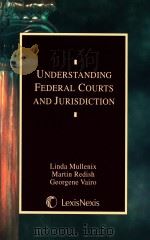
- UNDERSTANDING FEDERAL COURTS AND JURISDICTION
- 1998 MATTHEW·BENDER
-
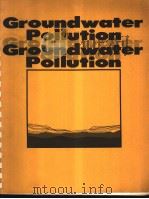
- CROUNDWATER POLLUTION GROUNDWATER POLLUTION
- EDITORIAL BOARD UNDERWATER RESEARCH INSTITUTE
-

- NIGHT OVER DAY OVER NIGHT
- 1988 ALFRED A.KNOPF
-

- Coastal Disturbance
- 1989 COA
-

- JURISDICTION IN CIVIL ACTIONS
- 1996 MICHIE
-
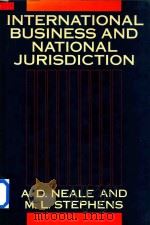
- International Business and National Jurisdiction
- 1988 Clarendon Press
-
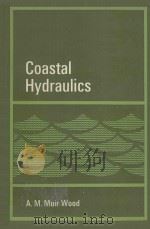
- COASTAL HYDRAULICS
- 1969 MACMILLAN
-

- PRESSURE VESSEL DESIGN
- 1982 THE AMERICAN SOCIETY OF MECHANICAL ENGINEERS
-

- DEVELOPMENTS IN COASTAL AND ESTUARINE POLLUTION
- 1988 PERGAMON PRESS
-
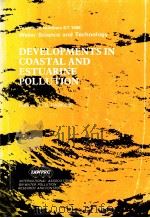
- DEVELOPMENTS IN COASTAL AND ESTUARINE POLLUTION FIRST EDITION
- 1988 INTERNATIONAL ASSOCIATION ON WATER POLLUTION RESEARCH AND CONTROL
-

- COASTAL CHANGES
- 1960 LONDON ROUTLEDGE & KEGAN PAUL
-
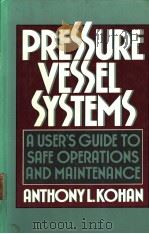
- PRESSURE VESSEL SYSTEMS
- 1987 MCGRAW-HILL BOOK COMPANY
-
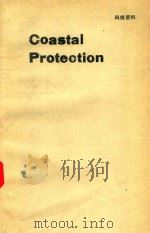
- COASTAL PROTECTION
- 1990
-
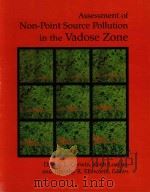
- ASSESSMENT OF NON-POINT SOURCE POLLUTION IN THE VADOSE ZONE
- 1999 AMERICAN GEOPHYSICAL UNION
-
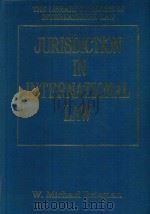
- Jurisdiction in International Law
- 1999 Ashgate/Dartmouth
提示:百度云已更名为百度网盘(百度盘),天翼云盘、微盘下载地址……暂未提供。➥ PDF文字可复制化或转WORD